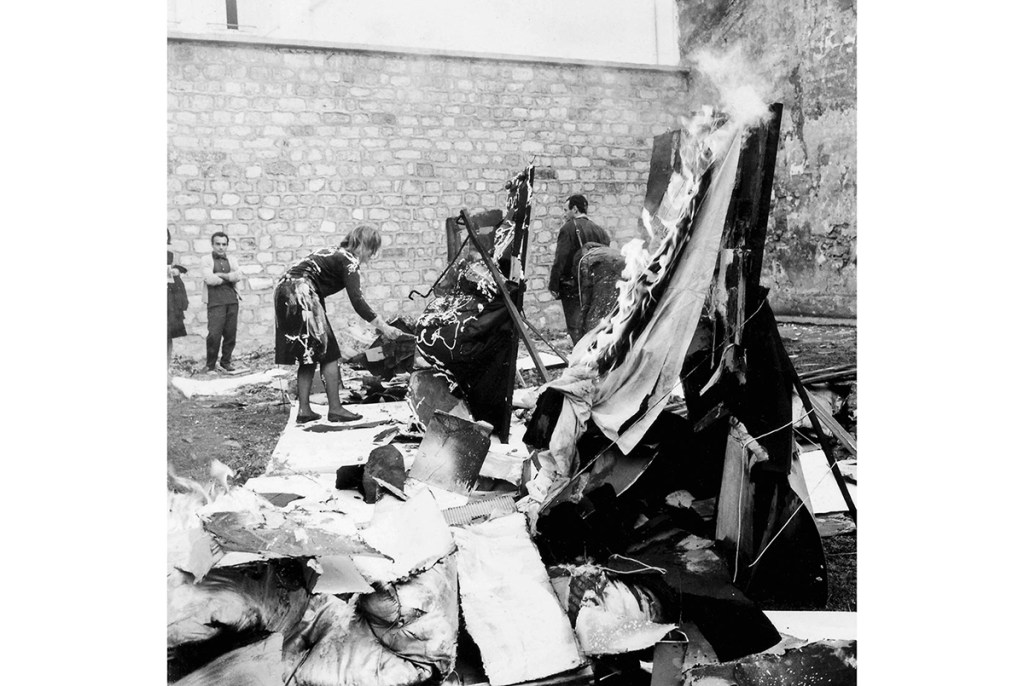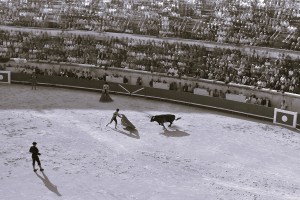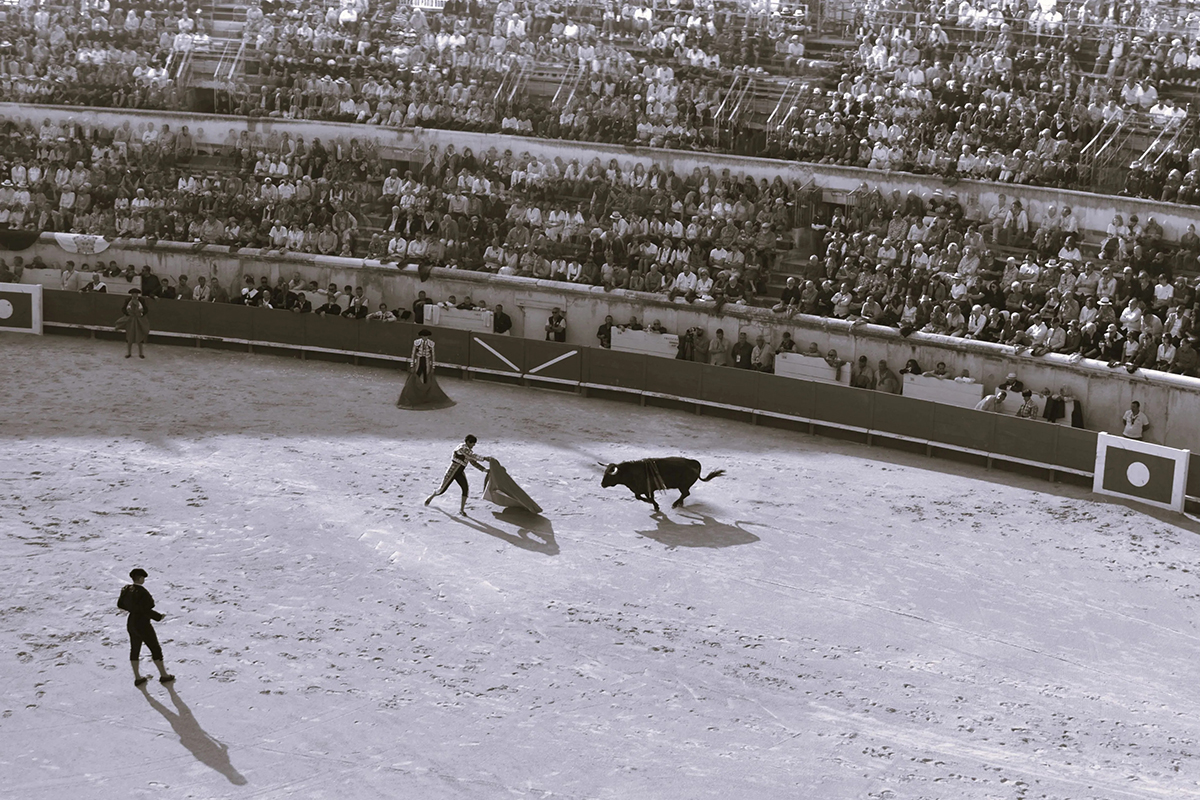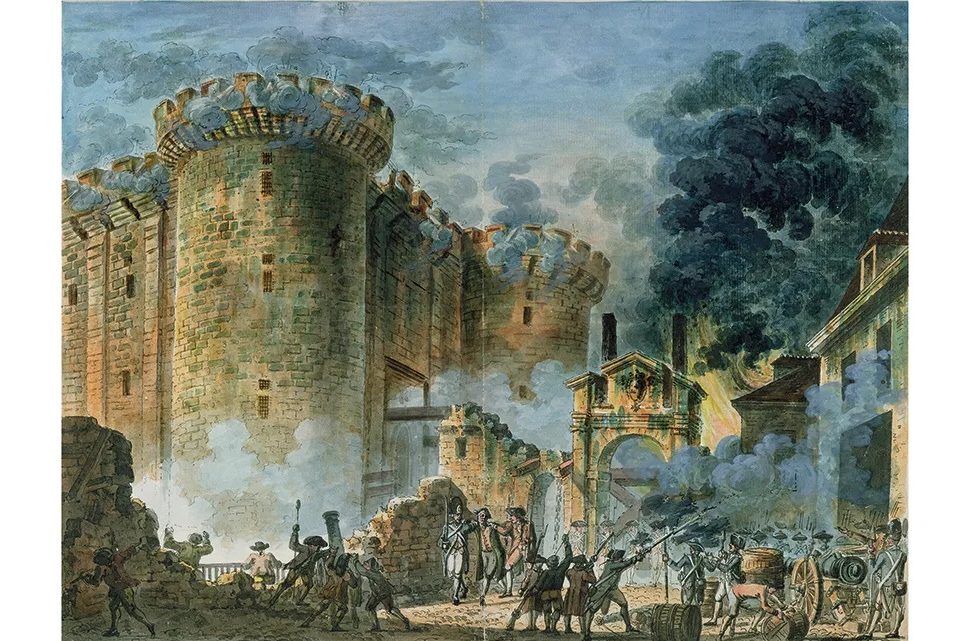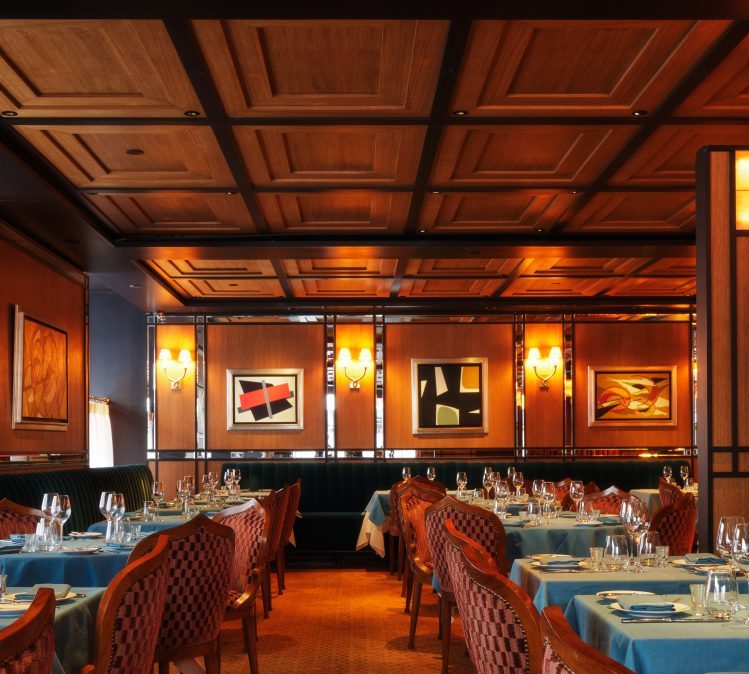Of all creatives, visual artists are perhaps the least likely to work in isolation; the atomized life of garret-installed solitude is not for them. Artists have always bounced off one another, whether in colonies, studios, collectives or co-operatives. The YBAs would not have been a thing, let alone a now-unfashionable acronym, had a significant group of them not chosen to hang out together. There are outliers, of course, but for the most part artists seem to like rubbing along together, perhaps in the belief that the fumes of oil from one studio can inspire brushwork in the one next door.
The Impasse Ronsin, a tiny cul-de-sac in the 15th arrondissement of Paris, was the artists’ colony to beat them all. It had everything: fame, obscurity, money, poverty, radicalism, outrage. It no longer exists but work created there and the very spirit of it, in dazzling eye-witness accounts, can be experienced at the Museum Tinguely in Basel this summer. Fat lot of good that is, you might think (unless you are reading this in Basel), but the accompanying catalogue goes a long way to transport you to the wildly bohemian world of the Impasse, now lost.
At its heart was the studio of Constantin Brancusi, who arrived at what was already a thriving artists’ colony in 1916. The Impasse was infamous as the site of a double murder that had occurred eight years earlier. ‘The widespread notoriety of this crime cannot be underestimated, and its lure is still obvious,’ says the show’s curator, Adrian Dannatt. The French president (and fabled shagger) Félix Faure had died in 1899, apparently while being orally pleasured by his mistress Marguerite Steinheil, who lived, and ran a salon, at No. 8, Impasse Ronsin. Rumors abounded that she had killed the president. Nine years later, her husband and mother were found murdered at No. 8, again with Marguerite strongly implicated. Amazingly, she was acquitted and went to live a respectable life in Hove with an English aristocrat. Meanwhile, the Impasse itself became even more famous when one of the world’s wealthiest and most revered sculptors moved in. ‘Imagine today Jeff Koons living in the street where the O.J. Simpson case happened,’ says Dannatt.
Brancusi’s studio in the Impasse stretched over five lots; it was the only place with hot running water and any degree of comfort. There were two refrigerators: one for Evian and one for Mumm champagne. There was a giant stove which he used to heat his tools and cook roast dinners for anyone passing by. The studio, full of his towering pieces, was an art work of form and light in itself. The rest of the colony lived around him in various levels of chaos, disorder, squalor and intense creativity. Brancusi remained at the Impasse until his death in 1957.
From the 1930s to the 1950s, this tiny alleyway was closely associated with the giants of surrealism and Dada. Marcel Duchamp, who was Brancusi’s unofficial agent, and Man Ray were both regular fixtures. The proximity of these artists was formative in the history of art, suggests curator Paul B. Franklin. ‘Brancusi and Duchamp upended traditional notions of the artist, and in so doing extended the limits of what was possible in the realm of art.’ Would that have happened outside the crucible of the Impasse Ronsin?
Jean Tinguely and his wife Eva Aeppli arrived in 1955, and Tinguely in particular seems to have been inspired by the location, since it is here that he developed his lasting reputation as a kinetic sculptor, keeping everyone up all night with his hammering as he created his giant Métamatics, which thrashed around, hurling paint over things. Occasionally his vast sculptures would be lifted up and paraded, shoulder-high, around the French capital by the inhabitants of the Impasse, much to the frustration of Parisian commuters. Meanwhile Niki de Saint Phalle built her famous sculptures of dolls next to balloons filled with paint, which she proceeded to shoot at with a hunting gun. The renowned collaborative duo Les Lalanne, Claude and François-Xavier, met at the Impasse in 1952 and stayed. ‘There was a water pump where Jean Tinguely would wash and where we would go and collect our water in old casseroles and bring it over to the studio,’ Claude recalls in the catalogue. ‘It was incredibly rudimentary but not in the least annoying… it had not really changed since the beginning of the century. Nobody really knew the Impasse; the only reason anyone knew about it was because of Brancusi’s studio, but then the majority of people had never heard of him either.’
It is thought that more than 200 artists were active in the Impasse from around 1864 until the last artist, André-Almo Del Debbio, left it in 1971. I think it is fair to suggest that between these dates a huge amount of art, not much washing, and a lot of sex took place. Everyone who was interested in modernism and wanted a taste of Paris bohemia turned up, from Peggy Guggenheim to Jacqueline Astor and Nelson Rockefeller, stepping across rubble-covered lots with decrepit walls and tumbling ivy, while dodging cats, chickens and even a goose.
The sculptor Phyllida Barlow went there with her sister when she was six. Writing in the catalog, she describes it thus: ‘We ask where the lavatory is…my mother is there, “it’s that hole” she says confidently; we stare in bewildered horror at the dark, encrusted orifice sunk deep in the damp ground; “go there”, she says, as if this is ordinary.’
Life in the Impasse was anything but; indeed, descriptions of it feel like something one would invent if asked to define French bohemia. Jean Tinguely lived ‘in a sort of space something between a garage and a rubbish dump’, says the artist Larry Rivers, who worked there in the 1960s. ‘I painted a portrait of Yves Klein,’ he recalls. ‘He was absolutely fanatical about soup and would regularly come round to Impasse Ronsin to make soup for Tinguely, Niki St Phalle and myself.’ Otherwise, artists would eat spaghetti cooked by Tinguely which he would share out in the middle of the street. ‘I couldn’t dream of a better life,’ writes artist Rotraut Klein-Moquay. ‘We were flying, full of fantasy and inspired by everything, just living for the art, like paradise.’
One of the Impasse’s most memorable final gestures saw a 20-year-old Argentine artist Marta Minujin make it the site for a creative act of destruction; in 1963 she designed a Happening where her work, formed from old mattresses, was immolated by her and fellow artists. ‘No one could buy anything of mine, they could only observe, given that my works were destined for the butcher,’ she recalls.
Dannatt points to the mid-century flourishing of the Impasse almost as a swansong for the importance of Paris as the world’s centre for modern art. ‘Between the end of the war and 1964, you still felt it. It went in 1964 when Robert Rauschenberg won the Biennale. Then the focus moved to New York. That notion of Paris has vanished now, although you can still see pockets of it in the Bastille and Belleville.’
Many of the 200 artists who passed through the Impasse are almost entirely unknown, but Dannatt says this is part of its power. ‘I like that. You have many artists who were obscure, but collaborated with Jean Tinguely or Yves Klein. It was very rough and poor but they were happy with that. Brancusi was hugely famous and would be visited by American billionaires, so to be working alongside him was great.’ Contrary to the fashionable term ‘placemaking’, where creativity is supposedly conjured up via broad pavements and public pianos, this was organic placemaking with a properly creative community at its heart. The Impasse was eventually knocked down and consumed by a children’s hospital. Brancusi had commanded it be saved in his will; in the event, his entire studio was removed to the Marais where it sits adjacent to the Centre Pompidou.
‘I wish the Impasse had been saved,’ writes Phyllis Tower who lived there in 1960. ‘Brancusi tried, but artists are ill considered and it seems the institutionalized forces of greed and the urge to tear down were as unstoppable then as they are now. I see this every day in my once vivid, now wrecked neighborhood, the Upper West Side of Manhattan.’
Impasse Ronsin: Murder, Love And Art in the Heart of Paris is at the Museum Tinguely until August 29. This article was originally published in The Spectator’s UK magazine. Subscribe to the World edition here.



